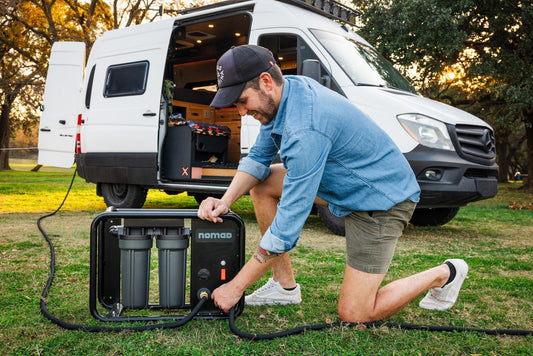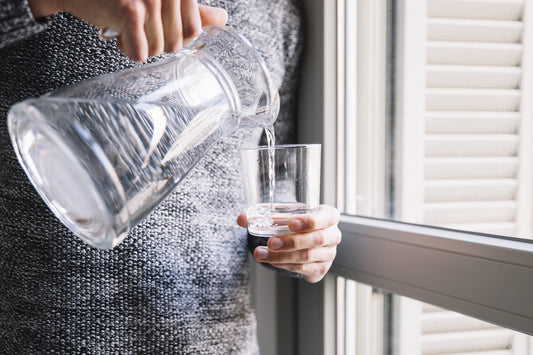Welcome! Clean, safe drinking water is one of life's most basic necessities. Yet, have you ever stopped to think about the quality of the water you consume daily? Has your tap water ever presented a peculiar taste, an unusual smell, or even a strange color? If so, you're in the right place. This comprehensive guide will explain why it's essential to test your water quality at home and show you how to do so with ease.

Image by bublikhaus on Freepik
Why Test Water Quality at Home
Importance of Testing Water
Water quality is a crucial aspect of maintaining a healthy lifestyle. While most of us trust our municipal water supply, it can be susceptible to numerous pollutants. Besides, if you're relying on well water, routine checks are an absolute must.
Health Implications
From simple stomach discomfort to severe health issues, contaminated water can cause an array of problems. Contaminants such as bacteria, heavy metals, or harmful chemicals can lead to illnesses such as gastrointestinal diseases, neurological disorders, and even certain types of cancer. Safe drinking water, free of these harmful substances, is essential to avoid these health risks.
Ecological Considerations
Besides health concerns, water quality has significant ecological implications. Poor water quality can disrupt local ecosystems, affecting wildlife and plant growth. Moreover, contaminated water can ruin soil quality, impacting agriculture and food safety. Hence, ensuring water quality is a step towards more sustainable living.
Water Contaminants

Image by macrovector on Freepik
Types of Contaminants
Water contamination can happen in several ways, each carrying unique health risks. Contaminants fall into four main categories: physical, chemical, biological, and radiological. Physical contaminants are particles visible to the naked eye, such as soil or sediment. Chemical contaminants include elements or compounds like salts, bleach, or heavy metals. Biological contaminants are organisms in water, such as bacteria, viruses, or parasites. Finally, radiological contaminants are unbalanced atoms with excessive nuclear energy, such as plutonium or uranium.
Impact of Contaminants
Water contamination can have both immediate and long-term health effects. For example, bacteria or viruses in water can cause immediate sickness—diarrhea, nausea, cramps, etc. On the other hand, long-term exposure to some chemical contaminants, such as lead, can have severe health consequences, including developmental issues in children, kidney problems, and high blood pressure.
How to Test Water Quality
Now that we've established the importance of water quality let's delve into how you can assess it at home. There are several simple DIY methods, and there are also commercially available home test kits.
Visual Inspection
Start by filling a clear glass with water and examine it carefully. Is the water clear, or is it cloudy or murky? Good-quality water should be clear without any floating particles.
Taste and Smell Test
Next, take a small sip. Good water should have a clean, refreshing taste. If your water tastes metallic, salty, or sweet, this could indicate the presence of harmful substances. Similarly, your water should be odorless. A musty or earthy smell might mean the presence of bacteria or algae.
pH Test
The pH level measures how acidic or alkaline your water is. You can buy a pH test strip or a digital pH tester. The pH scale ranges from 0 (most acidic) to 14 (most alkaline), with 7 being neutral. While slight deviations are usually safe, extreme pH levels can indicate contamination.
Conductivity Test
Conductivity measures the water's ability to conduct electricity, which is directly related to the number of dissolved salts or solids in the water. High conductivity might indicate contamination.
Bacterial Test
You can also perform a bacterial test using a home test kit. This test helps detect harmful bacteria, such as E. coli, which may indicate fecal contamination.
Commercial Test Kits
Commercial test kits usually contain a set of strips that change color when dipped into the water, indicating the presence of various contaminants. Some kits can test for pH, hardness, harmful chemicals like chlorine and lead, and even bacteria.

Image by freepic.diller on Freepik
Interpreting Test Results
After conducting your tests, you might be wondering what your results mean.
Understanding pH Results
A pH between 6.5 and 8.5 is generally considered safe for drinking water. If your water falls outside this range, it may lead to plumbing issues, and it may carry harmful contaminants.
Understanding Conductivity Results
Water with high conductivity may indicate the presence of excessive dissolved solids, affecting taste and potentially health. The typical range for drinking water is 50-500 microsiemens per centimeter.
Bacterial Test Results
If your bacterial test shows any harmful bacteria, you must take immediate steps to disinfect your water supply and retest it to ensure its safety.
Water Filtration Systems
Once you've tested your water, what can you do if you find contaminants? One answer is to invest in a water filtration system.
Filtration Methods
Various methods exist to filter water, including activated carbon, reverse osmosis, and distillation. Activated carbon filters are great for removing organic compounds and chlorine. Reverse osmosis systems are effective at removing a wide range of contaminants, including heavy metals and salts. Distillation systems heat the water to boiling and then collect the condensation, which is typically very pure.
Choosing the Right System
The best water filtration system for you depends on your water's quality and the specific contaminants you want to remove. For example, if you have a bacterial contamination, you might opt for a system with a UV filter.
DIY Water Filtration
Did you know that you can build a simple water filtration system at home? Using sand, gravel, and activated charcoal, you can construct a filter that improves water clarity and removes some contaminants.
When to Call a Professional
While DIY tests and filtration systems are great, there are instances when you should call a professional.
Signs of Serious Contamination
If your DIY tests reveal serious contamination, or if you're unsure about interpreting your results, it's a good idea to call in the pros. They can conduct more comprehensive tests and provide precise treatment options.
Cost of Professional Services
Yes, hiring a professional can be more costly than DIY methods. However, when it comes to the safety of your drinking water, the investment is well worth it. Moreover, many companies offer reasonable rates, especially considering the potential cost of medical bills from drinking contaminated water.

Image by ArtPhoto studio on Freepik
Conclusion
Congratulations! You're now equipped with the knowledge to ensure the water in your home is clean and safe. Remember, regular water testing isn't just about providing your family with fresh-tasting water—it's about securing their health and contributing to a sustainable environment.
FAQ
Can I test water quality without a kit?
Yes, visual inspection and taste/smell tests can provide basic information about water quality. However, for a comprehensive analysis, a test kit or professional service is advised.
Are home water test kits reliable?
While home test kits can give a general sense of your water quality, they may not be as thorough or accurate as professional testing. It's advisable to confirm serious or doubtful results with a professional service.
Can boiling water remove all contaminants?
While boiling water can kill many types of bacteria, viruses, and parasites, it doesn't remove chemical contaminants. Some harmful substances, like lead or pesticides, remain in the water even after boiling.
How often should I test my water?
You should test your water at least once a year. However, if there are any sudden changes in taste, smell, or appearance, it's best to test immediately.
What is the best water filtration system for home use?
The ideal system depends on your water's quality and the specific contaminants you need to remove. Always test your water first, then choose a filtration system based on the results. Consult with a professional for the best advice tailored to your situation.
Featured Image by wirestock on Freepik





